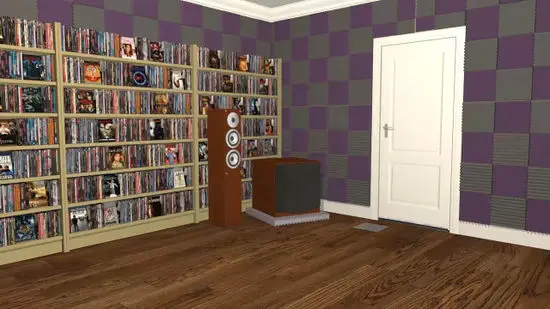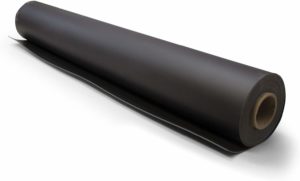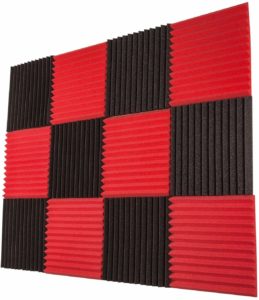Sharing walls is a common thing we see all the time in most places we live in. Whether you are living in an apartment, condo or your own home. In one way or the other, you are bound to share a wall with another room.
Today, I will share some soundproofing tips on how to reduce noise through walls in an apartment or your house.
Apartments are more prone to noise than any other residential buildings. This is because people from all walks of life rent these spaces and have different lifestyles which could affect other tenants in the building.
I have lived in apartments before and I can feel your pain when it comes to having a quiet time to yourself without disturbance from a neighbor.
It is a lot better if you are sharing your walls with a family member at home than when you are sharing walls with neighbors in the apartment or flats.

Why I am saying this? – It is because you can easily tell that family members to reduce their sound. However, it is not easy to have noise conversations with neighbors who you are not friends with or you don’t even know at all.
Such conversations can be difficult to have. To not appear as intruding or complaining, you can actually do something about it without having to approach or disturbing the other person you are sharing the wall with.
There are many different sounds you can hear through the wall you are sharing with the neighbor. It could be their television noise, their washing machine being placed against the wall you are sharing, or their sound system volume is just too high.
These sounds coming through the wall can vary in frequencies from low to high. Depending on what type of noise it might be.
So, here I will share some soundproofing walls tips you can use to reduce noise between rooms.
How to Soundproof a Wall Already Built
1 . Identify the Wall the Noise is Coming From
In a four-corner room, there are about four walls basically in the room. Depending on how your apartment or house is built you might be sharing at least two walls with different rooms.
The noise I believe will be coming from one of those rooms. This is where the weakest walls are. Identify which of your neighbors is always making the most noise that disturbs you a lot.
What type of wall is it separating the two rooms?- It is drywall or a bricks and blocks wall. Now that you have identified the type of wall we can check to see if there any gaps or cracks that you need to deal with.
If there are gaps or cracks in the wall, it will be best to seal them. This is because sound is like water, it will always pass through any small opening it gets fast into the room. You can use a sound deadening compound like Green Glue to fill all the gaps and cracks.
When you have finish tackling these parts then we can now look at other ways on how to reduce the noise between the rooms.
2 . Install a Mass Loaded Vinyl Mat on the Wall
Mass loaded vinyl can pretty much be used to soundproof a lot of areas in the room. Vinyl mats can be used to soundproof walls, ceiling, the floor, windows and even the door of the room. These mats are versatile when it comes to soundproofing.
These are good at reducing noise frequencies from low to medium. These are usually frequencies generated when one object impacts another, therefore, sending vibrations through the object(the walls, floors and ceilings).
Examples of impact noise could be the washing machine vibrating, the footsteps or a pet scratching the surface of the floor.
The vinyl mats work by dampening the soundwaves. Therefore absorbing the energy of the sound waves. If you think the sound coming through the wall is mostly vibrations, then you can get a Mass Loaded Vinyl Mat and hang it on that part of the room wall.
These mats are odorless and are good sound absorbers.

3 . Add Extra Layer of Drywall to the Existing Wall
You will quite agree with me that most room walls are made of drywall. This is because many building owners in their attempt to cut down cost, they use these drywalls as wall separators.
This makes the walls in rooms thin walls and as such when sound is made one room it is heard easily in the other room that shares the wall.
One way of reducing noise through walls is by making the walls thicker. To do this, you can add an extra layer of drywall to the existing wall.
You can make the walls, even more, soundproof by first adding green glue to the wall first followed by a mass loaded vinyl mat and now top with the drywall.
This way the wall will have a higher STC rating which means better sound reduction. Adding Drywall alone on top of each other doesn’t always reduce the sound that much.
But if you use the green compound and add the vinyl mat in between which have different STC ratings. Then the Overall STC rating increases.
After you have installed the extra drywall, you might want to paint it to give the room a good visual appeal. To do this, you can actually use soundproof paint to paint the walls up.
This paint is thick and when you apply several codes, it can be massive. I have heard some folks asked, does soundproof paint actual work?- the answer is yes. Soundproof paint can actually work if you are combating not very loud noise.
But it works better when you combine it with other soundproofing materials like the drywall. This paint can easily be clean off with water and soap.
4. Install Soundproofing Foam to the Wall
Acoustic soundproofing foam panels are some of the most popular soundproofing materials around. They can pretty much be use to soundproof any part of the room like the vinyl mats.
They are also cheap and effective and are known to be effective noise insulators. From recording rooms to home studios, these foam panels are pretty much found in almost every soundproofing project.
You can get these acoustic foams and place them where the noise is coming from. In combination with other methods outlined here, you can achieve even better noise reduction results.
You can also choose to use them alone on the walls. If you are not allowed to modify the walls( maybe you are renting). These foams have adhesives on them. You simply place them on the wall.

Truly, sometimes they might be a bit bigger investment. But, you know what? They are definitely worth it for your thin apartment walls.
Sometimes is not only the neighbors you are sharing a wall with that make noise but also the neighbors above you. Check out how to deal with your noisy neighbors upstairs here.
5 . Hang Soundproof Wallpaper on the Wall
These soundproof wallpapers are amazing. You can create a brick wall in your room with these soundproof wallpapers. These 3D brick foam wallpapers are just made to look like your brick house. They make great environmental wall decor panels.
Made of soft foam which is an anti-children collision, waterproof, moist proof and sound insulated.
The recommended surfaces that you can use them are Featured walls, Dirty walls, TV walls, sofa background, living room walls, bedroom walls, kitchen, kids room, stairs and on glass, painted surfaces, wood board, wallpaper etc.
These wallpapers are self-adhesive. So you simply peel them and paste it on the wall. They are removable and don’t cause any damage to the walls.
Easy to DIY cut the shape according to your room area.
In case you’re living in a rented apartment where you can’t just do “decoration” without permission of your landlord – removable soundproof wall installations like these might come handy.
Mostly because you can remove them and take them with you without damaging the existing walls.

6. Use Soundproof Blankets on the Wall
Soundproofing blankets are commonly used in studios or recording rooms.
They are really good absorbing materials, as they are mostly made of soundproofing substance.
Simply put, they are blankets with special noise-reducing material that will cut the noise up to 40%. Furthermore, they are massive and really heavy.
Combine them with DIY soundproof wall techniques and you’ll improve the chance of eliminating the loudest noise.
You will probably have to ask for a hand in order to install these ones. They are not hard to install, but really heavy to hold and put on simultaneously.
There is one useful hint for acoustic blankets- always search for those with grommets or eyelets, as they will drastically ease the whole installation process.
These soundproof blankets come in different colors for you to choose the color that fits your room decor.
You might also be interested in checking out my recent articles:
Tips on Soundproofing a Finished Room
How to Soundproof Your home theatre door
7 . Place Your Bookshelf Against the Wall and Fill the Room
When you are looking at how to reduce noise through walls in a room, this can be one of the things you can easily look down on.
If you have a bookshelf that is full of books you can rearrange the room and place the shelf just a few inches away from the wall. This will act like a second wall decoupled from the main wall.
This is the cheapest and free way to soundproof your apartment wall or house wall without spending money.
You are probably familiar with the echo effect. Then, you probably know how it echoes in the empty room. If the room is empty, you will need to fill it up a bit.
This way, when sound is coming through the wall, it won’t bounce from the hard surfaces like the walls.
How Much Does It Cost to Soundproof a Wall?
The cost of soundproofing a wall will vary depending on your budget. The cost of one green glue is about $ 24, mass loaded vinyl mat cost about $100, the average cost of acoustic foam panels is about $ 22 for 12 pack. The soundproof wallpaper is about $90 and the sound deadening blanket is around $70.
How Quiet Can the Walls Get?
Sound is measured in a variety of ways, from decibels to Sound Transmission Coefficient (STC), and each material and product has its own rating.
I know this might sound complicated to you especially if you are not familiar with soundproofing products and materials.
To put it on simpler words, The higher the STC of a soundproofing material or product, the quieter the space will be. For example, let’s take a window pan which has an STC rating of 25, it means sound can easily travel through the material.
A Drywall with an STC rating of 50 will block out a decent amount of noise and an 8-inch concrete wall that has an STC of 72, means not much sound is passing through it.
That been said, each soundproofing material above has an STC rating. The higher this number the better it will be at soundproofing.
If you combine materials of different STC ratings, then you will achieve better soundproofing results as well.
Final Words on How to Reduce Noise Through Wall in Apartment Room
As the largest point of connection to your neighbors’ rooms, your walls are a major source of neighbor noise. Ranging from loud conversations to TV noise, the washing machine and the children playing and shouting.
Luckily, walls also are one of the easiest things to fix when it comes to sound transmission. As I mentioned above, these soundproofing techniques are exciting DIY projects you can embark on yourself.
It will take some time and investment, so you need to plan and decide how much you are willing to invest in soundproofing materials to have your quiet and peace.
All you need is to first identify which wall/walls the noise is passing in your apartment. Then check through the wall for any defects like gaps, cracks which you can you the green glue to seal.
Then, from there you decide on how much extra mass you want to add to the wall. You can choose to use only the soundproof blankets if you feel the sound isn’t that intensive or only the acoustic foam panels.
But adding a mass loaded vinyl mat and drywall will make the wall a bit thicker and better soundproof. The decision of which of these soundproofing tips you will want to use in your room is up to you.
If you are adding the extra mass like the drywall to the existing, make sure you are within the building rules and regulation as some major renovations are not allowed in some apartments if you are renting.
By combining two or more of these techniques will make the project more effective.
- How to Chew Quietly While Eating-Effective Tips - April 14, 2023
- Why is My Clutch Pedal Squeaking – Causes & Fixes - April 14, 2023
- Propane Tank Making Hissing Noise (Solved) - February 25, 2023
